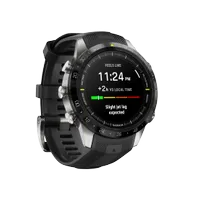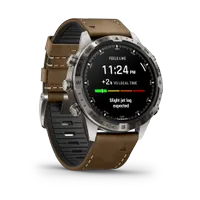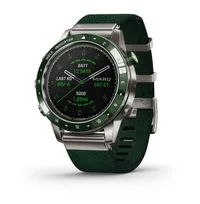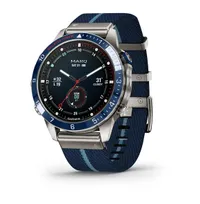Garmin just quietly released five new watches
The second ultra-premium Marq range is here
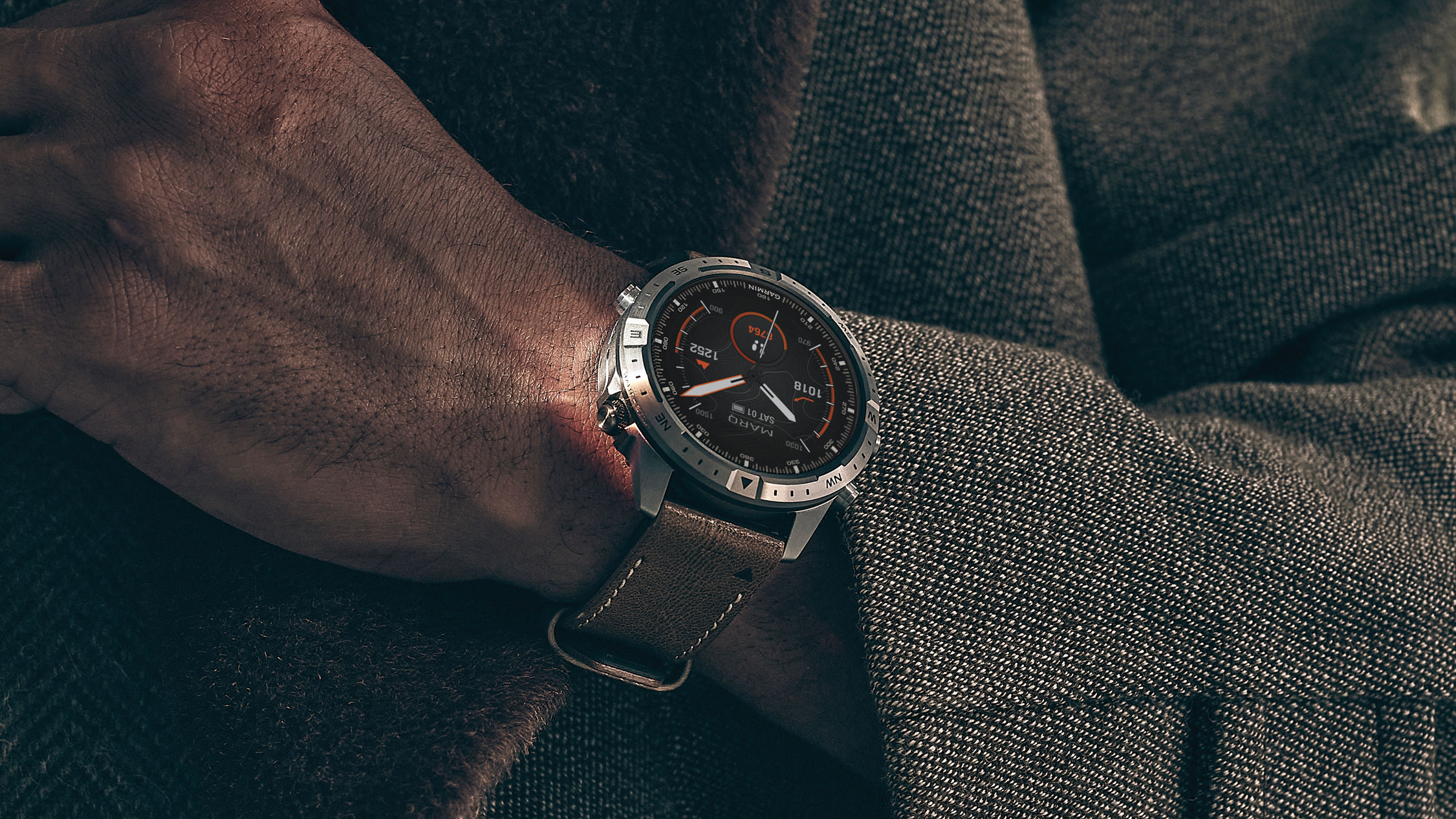
Garmin has unveiled its second-generation range of Marq watches. An ultra-premium collection, even more so than the best Garmin watches such as its top-end Fenix and Epix sports watches, this ‘luxury’ watch collection is tailor-made with specific sports in mind, with five watches boasting features for athletes, golfers, sailors, aviators, and adventurers.
As you might be able to tell by the line’s ‘luxury’ price tag, these watches do not come cheap, starting at $1,900 in the US, £1,600 in the UK and AU$3,250 in Australia for the slightly less expensive Athlete model. The watches are made with a Titanium Grade5 casing, domed Sapphire glass lenses, premium straps depending on your chosen model containing materials like more titanium, hybrid leather, and woven nylon, a 16-day battery life, and (a new addition to the range) an AMOLED touchscreen.
All of the watches offer wrist-based heart rate, respiration, and stress tracking, advanced sleep insights, and Garmin’s excellent Body-Battery energy monitoring widget. We should hope so, too: for those prices, it should do everything bar making you coffee in the morning. Garmin’s new Jet Lag Advisor widget will also debut on the Marq watches, which helps you minimize the effects of Jet Lag if, say, you’re traveling internationally before a big race.
Garmin says its new Jet Lag Adviser ‘helps users feel their best mentally and physically. Using the user’s sleep history and other metrics, the adviser recommends the amount of light exposure, a sleep schedule, and exercise to minimize the effects of jet lag for their next long-distance single or multi-destination trip’.
Let's examine each watch in turn:
Garmin Marq Athlete
The cheapest in Garmin’s new luxury stable, it offers the Forerunner’s Training Readiness score widget, a Real Time Stamina metric to track how well you’re performing during the workout, the PacePro virtual pacer, and a silicone strap. Rotating bezels can keep an eye on your running time and VO2 Max.
The Athlete starts at $1,900 in the US, £1,600 in the UK and AU$3,250 in Australia.
Garmin Marq Adventurer
This time, the rotating bezel can be used to mark a compass reading on the watch. You can monitor your blood oxygen level, perfect for high altitude performance, while multi-continent topographic maps, round-trip routing, and a new orienteering feature help you find your way home again. A mixed leather and silicone strap looks suitably rugged.
The Adventurer starts at $2,100 in the US, £1,899.99 in the UK and AU$3,600 in Australia.
Garmin Marq Golfer
Garmin is leaning on its golf watch pedigree to shine here, with a green ceramic inlay and tri-tone green nylon strap. The ceramic bezel is etched with 18-hole markings, so you can keep count of where you are. A virtual caddie, wind speed and direction tools, club tracking, and calculations based on GPS readouts of the course can help you hone your game.
The Golfer starts at $2,300 in the US, £1,999.99 in the UK, and AU$3,900 in Australia.
Garmin Marq Captain
The blue color scheme and regatta marker etched onto the bezel betray this version’s sailing roots. A Jacquard-weave French strap is also slightly nautical-themed. But get this: the watch has an autopilot that can interface with your boat, waypoint markers to ensure you know where you are during a race, and a “man overboard” widget that can mark the location and time someone fell off the ship. How cool is that?
The Captain starts at $2,200 in the US, £1,999.99 in the UK, and AU$3,750 in Australia.
Garmin Marq Aviator
Anyone for a game of volleyball? The Aviator has 24-hour bezel marking to help you track different time zones, it’s got widgets for advanced aviation weather reports, forecasts for specific airports, and a barometric altimeter. Emergency mode shows your best glide speed, estimated glide distance and glide time during engine-related issue. The Aviator starts at $2,400 in the US, £2,099.99 in the UK, and AU$4,100 in Australia.
Analysis: Different but same
It’s clear the watches are aimed at big spenders and frequent travelers who want all the data from a smartwatch with the trappings of a luxury brand such as Patek Phillipe, or Omega. The different materials and functionalities are tailor-made for people whose lives revolve around particular sports, hobbies, or disciplines. However, beyond cosmetics, the innards of all the watches are largely the same.
Looking at the lists of specs and comparing them to one another, it’s clear most, if not all, of the golf stuff, is available on the other four watches. The on-site specs list shows ticks across all the golfing features on the other four watches. Jet Lag Advisor, the province of the Aviator watch, will also be available across all devices, and we sincerely hope this gets rolled out to the rest of Garmin’s sports watch range as this sounds like a great feature.
Sign up for breaking news, reviews, opinion, top tech deals, and more.
But beyond a few extremely specialist widgets, the differences lie in the bezel etchings, strap materials, the watch color schemes, and of course the marketing.
This second-gen Marq is an excellent fitness and well-being watch stuffed with all Garmin’s latest tools, but we can’t imagine the Athlete, for example, is much better than the Forerunner 955 Solar when it comes to tracking. It's also missing the Power Glass battery-extending solar tech in Garmin's much cheaper Enduro and Forerunner watches.
What you’re paying for is the luxury package, an eye-catching piece of wrist candy that looks like it belongs with a smart suit rather than athleisure wear.

Matt is TechRadar's expert on all things fitness, wellness and wearable tech.
A former staffer at Men's Health, he holds a Master's Degree in journalism from Cardiff and has written for brands like Runner's World, Women's Health, Men's Fitness, LiveScience and Fit&Well on everything fitness tech, exercise, nutrition and mental wellbeing.
Matt's a keen runner, ex-kickboxer, not averse to the odd yoga flow, and insists everyone should stretch every morning. When he’s not training or writing about health and fitness, he can be found reading doorstop-thick fantasy books with lots of fictional maps in them.
